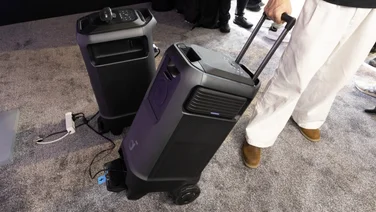To help us provide you with free impartial advice, we may earn a commission if you buy through links on our site. Learn more

Google has admitted its self-driving cars have been involved in 11 accidents – but claims human drivers were to blame for all of them. Google is one of the few companies that have been granted permission to test autonomous vehicles on public roads in the US. Following reports that its cars had been involved in several prangs, Google has published a blog post detailing the cars’ accident record.
“If you spend enough time on the road, accidents will happen whether you’re in a car or a self-driving car,” writes Chris Urmson, director of Google’s self-driving car program, on Medium’s Backchannel. “Over the six years since we started the project, we’ve been involved in 11 minor accidents (light damage, no injuries) during those 1.7 million miles of autonomous and manual driving with our safety drivers behind the wheel, and not once was the self-driving car the cause of the accident.”
Google says seven of the 11 accidents have resulted from the vehicle being struck from behind. “Rear-end crashes are the most frequent accidents in America, and often there’s little the driver in front can do to avoid getting hit,” says Urmson. The Google cars have also been “side-swiped” twice and struck by a car that passed through a stop sign.
Although all the cars in Google’s tests currently have a human “safety driver” behind the wheel, who is able to assume control if the computer should fail, Google ultimately intends to remove the steering wheel and other driving controls, leaving occupants powerless to prevent accidents. The vehicles’ ability to avoid accidents will therefore be paramount in the minds of potential buyers and legislators.
Human error
Even though Urmson insists the accidents haven’t been the cars’ fault, he says the company has still been able to learn from each incident. “Not only are we developing a good understanding of minor accident rates on suburban streets, we’ve also identified patterns of driver behaviour (lane-drifting, red-light running) that are leading indicators of significant collisions,” he writes. Urmson says the company has now programmed the cars to “pause briefly” after the traffic lights turn green at crossroads, for example, to minimise the chances of a collision with a distracted driver who’s failed to notice the lights.
Of course, there are some examples of driver idiocy that it’s almost impossible to account for. Urmson provides stills from camera footage showing the Google car safely passing vehicles driving on the wrong side of the road and avoiding collision with cars that have chopped across the Google car’s lane. “Our safety drivers routinely see people weaving in and out of their lanes; we’ve spotted people reading books, and even one playing a trumpet,” he writes.
Little wonder Google continues to insist it cars will prove far safer than we are behind the wheel, even if some accidents are unavoidable.






